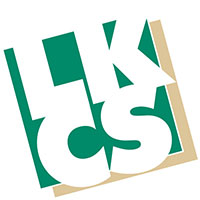Website accessibility is quickly becoming vital for all Banks and Credit Unions as litigation against financial institutions spreads rapidly.
You may be asking yourself, since when has ADA applied to websites? The Americans with Disabilities Act requires that all public accommodations provide facilities and equipment that are readily accessible to, and usable by, people with disabilities. Through litigation, advocates have been working to extend access from the physical world to the web.
It is the job of the Department of Justice (DOJ) to enforce these laws and they have recognized that websites offering goods or services to consumers are places of public accommodation and must be accessible to the disabled.
In recent month’s financial institutions have received aggressive demand letters alleging that their websites do not meet the ADA’s online accessibility standards. The letters seek settlement offers and threaten legal action against financial institutions that do not modify their websites to comply with Web Content Accessibility Guidelines (WCAG 2.0). The WCAG 2.0 establishes the standards for providing website accessibility for people with visual and hearing disabilities.
The good news is that there is a lot you can do to avoid becoming a target. LKCS is helping businesses ensure their websites are fully accessible for disabled Americans to make sure ADA guidelines are met. LKCS provides support for banks and credit unions, identifying all potential Web Content Accessibility Guideline (WCAG) issues, making changes to ensure accessibility, monitoring sites for ongoing issues, and providing reports demonstrating the efforts made in following WCAG guidelines.
People with disabilities rely on specialized accessibility tools – including particular browser settings, media players, alternate keyboards, text-to-speech screen readers and voice recognition software – to navigate a website. However, in order to be able to fully access all aspects of a website, the site needs to be programmed in a way that functions properly with those specialized tools.
Currently, four different types of website compliance are mandated, including:
- Perceivable – Information and page functionality must be presented in ways that can be readily perceived. For example, using alt tags to describe a photo or tell the user what a button does.
- Operable – User interface elements and navigation must be operable using a keyboard and a mouse.
- Understandable – Information must be conveyed in a way that is easily understood.
- Robust – Website content must be easily interpreted by a wide range of browsers, as well as the tools that are used by the disabled community.
LKCS developers meticulously follow WCAG guidelines for implementing these technical standards. For instance, all photos are checked to make sure they contain detailed ALT tags, which are short text descriptions that explain what an image displays. Computer devices, such as screen readers, read this simple code and speak the ALT description for visually impaired users. For websites with extensive navigation menus, specific anchor links are used for WCAG that allow users to skip around until they find the information they need.
LKCS can also provide clients who would prefer to have their in-house development team make the changes, with access to a web-based portal that shows each area of concern. The web portal provides detailed information on which pages have an issue, including direct links to the WCAG guidelines, so that web content not meeting the guidelines can be efficiently corrected by providing developers with the specific web page code in question.
As the legal and financial concerns of not meeting the website compatibility guidelines will likely become more frequent, financial executives should start planning now to audit their digital presence, and consider what principles may become mandatory, and how they will achieve compliance within those principles.
The cost of redesigning websites or making changes to existing websites to meet WCAG 2.0 AA guidelines now, is going to be much less than the alternative that will soon proliferate. The WCAG 2.0 Standards can be reviewed at http://www.w3.org/WAI/WCAG20/quickref.
Learn more about LKCS’ ADA Implementation Accessibility and ADA Compliance Guidelines
Did you like this blog post?
Get more posts just like this delivered twice a month to your inbox!



